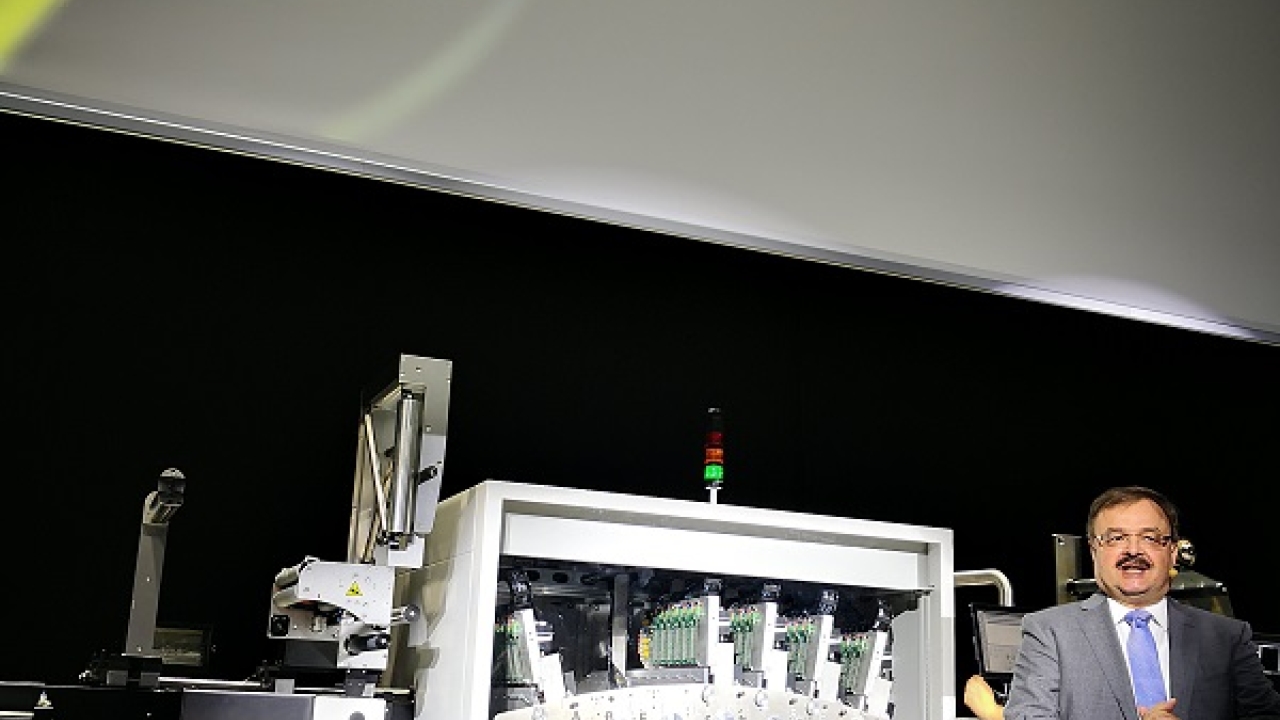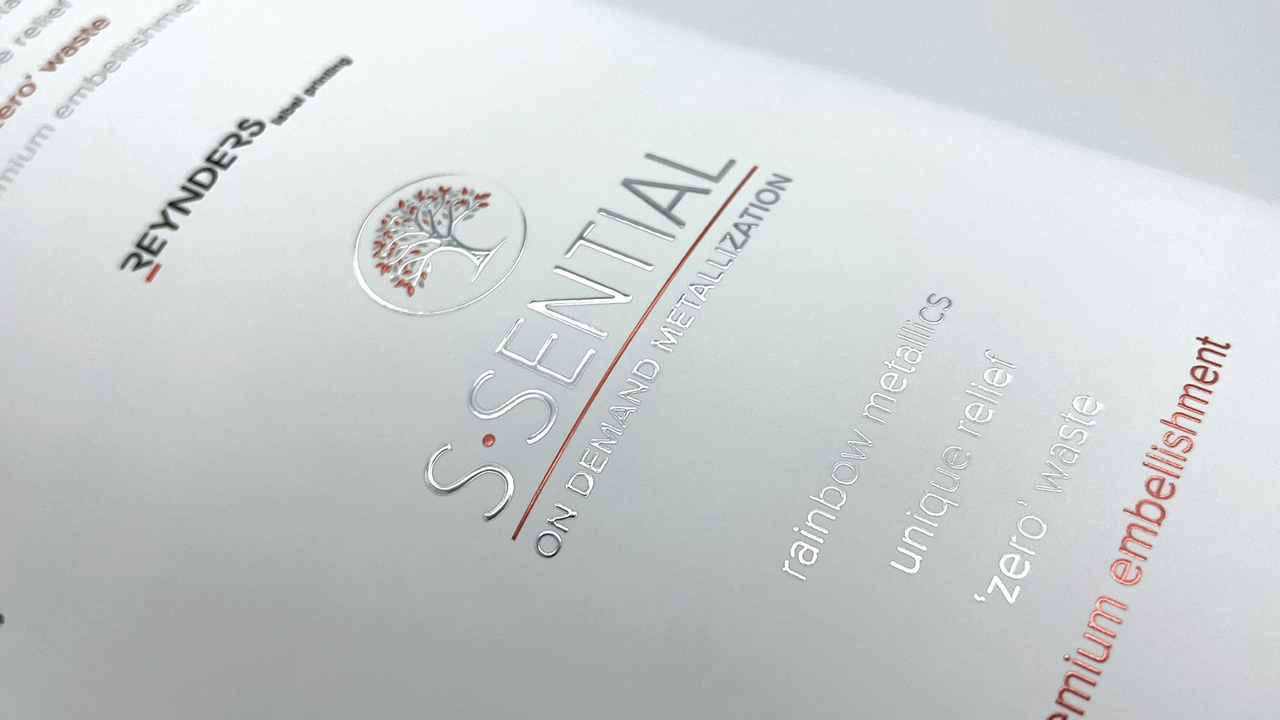Canon takes on inkjet label printing

Canon has entered the inkjet label printing market with the introduction of the Océ LabelStream 4000 Series. Despite being new to the label market, Canon is far from new to digital printing. Almost half of its business is related to print. Its production printing portfolio covers wide format, web-fed and sheet-fed presses.
Canon sees a genuine window of opportunity for itself in packaging, starting in labels, as Crit Driessen, vice president and head of digital packaging, production printing products (PPP) at Océ Printing Systems, explains: ‘Océ is keen to break into forward-looking markets, and industrial packaging printing offers excellent opportunities for new revenue streams. We are confident that market players will appreciate the Océ LabelStream’s productivity and customizing abilities as a way to add value to label printing.’
His colleague Christian Unterberger, chief marketing officer and executive vice president, PPP, identifies the company’s ‘Inkjet DNA’ as another reason for it to be confident about its prospects in the label market, and digital package printing in general. ‘We are heavily experienced in inkjet, invest a lot into R&D, and develop our own inks and printheads for specific markets.’
He continues: ‘We are still investing in our existing markets, but as growth rates have declined in these areas we have looked for something new. Major investments into graphic arts applications and our experience and expertise in inkjet naturally drew us to packaging, where we might be a new player but want to grow and play a leading role.’
The company
Canon acquired Océ in 2010, which now operates as a brand name for digital printing products. Canon Océ has already had exposure to packaging in general, with some of its flatbed machines used to produce packaging. It further worked on liquid toner technology before canceling its development. Océ InfiniStream, a web press for folding carton applications, was to be the first product to use the company’s liquid toner technology.
‘Océ has been looking at the packaging market for a number of years,’ says Unterberger. ‘Over time we realized the liquid toner technology did not match the industry’s needs and made the conscious decision not to come to market with InfiniStream. In the meantime, we have launched other products in inkjet that have needed to meet very high industry expectations in terms of quality and productivity. Building on this base, we have identified that now is the right time to enter the packaging market.
‘On the document side of the business, we went in early and had to develop the market. As a newcomer in an established market it is easier, although we still have much to learn. And what we learn from the label market will lay the groundwork to evolve into other packaging markets, such as flexibles, folding carton and corrugated. Canon looks and acts long-term. By entering into packaging with a label press, it is clear that there is a much larger plan to evolve into other markets.’
The press
To begin its journey into packaging, Canon has debuted with the Océ LabelStream 4000 Series. This is a 5-color UV inkjet press targeted at self-adhesive and certain flexible packaging applications. Built on FFEI’s inkjet platform, the press features the latest Xaar 2001 printheads to offer a resolution of 720 x 600 DPI, with three gray levels available. A variable drop size permits reproduction of fine details, smooth tones, vibrant colors and solid areas. For the application of white, two print modes have been created, providing ‘better’ and ‘best’ opacity. True white offers opacity at 67 percent, with Alpine white promising 80-plus percent opacity at the standard press speed of 48m/min. A wide material range covers standard labelstock including PP, PE and PET and specialty substrates from 40 micron up to 450 micron, as well as thicker cartonboard.
A standard printing width of 330mm is available, with a 410mm version providing higher productivity and greater scope for flexible packaging production. The standard press speed is 48m/min, although 68m/min can be achieved for less demanding jobs. This equates to an output range of 950 sqm an hour up to 1,672 sqm an hour.
While it can be run as a standalone CMYK+W press, various in-line finishing tools can be specified – semi-rotary die-cutting, slitting, dual rewind. Turnbar, delam/relam, lamination, cold foil and varnish options provide enhanced in-line finishing. Automatic changeover of die-cutting cylinders is possible as the press is built to maximize automation technologies. The addition of flexo color stations pre- and post-digital make hybrid printing another possibility.
The partners
Canon Océ has worked with FFEI to build the heart of the machine, while fellow UK manufacturer Edale has been involved in the development through its web handling expertise and integration of the line, ensuring the effective running of the press from the in-feed to finishing.
Unterberger says: ‘Both of these companies are established specialists in the label market. We wanted to be fast to market, and while we could no doubt have developed the system to a high level on our own, we decided to partner with key companies to expedite our entry into the market.
‘Using FFEI as a base upon which to build our technology has given us an edge, as we were able to work closely with its engineers to develop a differentiated final product. We have shared IP, related to print quality and speed, that only we can use.
‘The machine has only been in development for 18 months, and thanks to partnerships with companies such as FFEI and Edale we have been able to bring something to market very fast.’
The opportunity
The Océ LabelStream 4000 Series will be sold exclusively by Canon, with the first orders planned for the end of 2018.
‘Looking at the value of digital in packaging going forward, demand is going to be high,’ says Unterberger. ‘The packaging market in general is larger than the document market we are in today, so it is a logical expansion for Canon.’
Canon is positioning itself at the upper end of the inkjet label printing market in terms of quality and productivity. The printheads used, resolution range and white opacity available are among those highlighted as evidence of its quality capabilities. In terms of productivity, flexibility in finishing, and the integration and automation of a modular toolbox position the Océ LabelStream 4000 Series to meet most requirements in the digital label printing market.
Canon also notes how its experience in transaction and commercial printing positions it to offer a service structure many existing suppliers in the packaging market are unable to match or better. This includes, in some instances, a two-hour window to respond to a customer and have their machine back in production.
Unterberger continues: ‘We have customer commitments all over the world involving a high degree of support and service. We will use the same logistics and service organization to support packaging customers, so, depending on the service level requested by the customer, we will be able to offer similar response times. Whether that be 10 hours or much shorter. This is another we way we can add real value.’
This all leads Driessen to conclude: ‘We believe this is the right time for Canon to enter the market, with all the technologies and organizational strengths we have to offer.’
Stay up to date
Subscribe to the free Label News newsletter and receive the latest content every week. We'll never share your email address.


